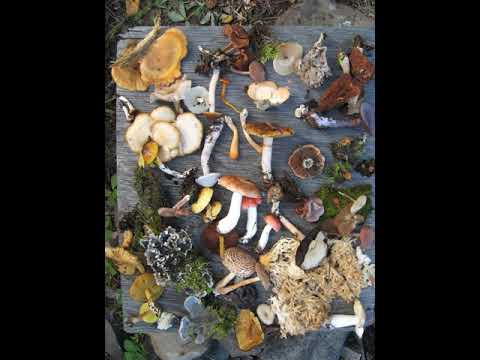Biodiverse | Wikipedia audio article
This is an audio version of the Wikipedia Article:
https://en.wikipedia.org/wiki/Biodiversity
00:05:11 1 History of terminology
00:07:17 2 Definitions
00:07:27 2.1 Prior term
00:07:49 2.2 Alternate terms
00:09:02 2.3 Wilcox 1982
00:09:53 2.4 Genetic: Wilcox 1984
00:10:19 2.5 United Nations 1992
00:11:08 2.6 Gaston and Spicer 2004
00:11:23 3 Distribution
00:12:51 3.1 Latitudinal gradients
00:14:37 3.2 Hotspots
00:17:39 4 Evolution
00:17:49 4.1 Chronology
00:20:28 4.2 Diversification
00:24:40 5 Ecosystem services
00:24:50 5.1 The balance of evidence
00:26:34 5.1.1 Services enhanced
00:26:43 5.1.1.1 Provisioning services
00:27:38 5.1.1.2 Regulating services
00:29:24 5.1.2 Services with mixed evidence
00:29:34 5.1.2.1 Provisioning services
00:29:45 5.1.2.2 Regulating services
00:31:41 5.1.3 Services hindered
00:31:50 5.1.3.1 Provisioning services
00:32:08 5.1.3.2 Regulating services
00:32:41 5.1.3.3 Provisioning services
00:33:13 5.1.3.4 Regulating services
00:35:38 5.2 Agriculture
00:40:38 5.3 Human health
00:44:39 5.4 Business and industry
00:45:21 5.5 Leisure, cultural and aesthetic value
00:47:02 5.6 Ecological services
00:49:19 6 Number of species
00:51:34 7 Measuring biodiversity
00:51:45 8 Species loss rates
00:55:22 9 Threats
01:03:40 9.1 Habitat destruction
01:06:19 9.2 Introduced and invasive species
01:11:08 9.2.1 Genetic pollution
01:12:26 9.3 Overexploitation
01:13:17 9.4 Hybridization, genetic pollution/erosion and food security
01:14:57 9.5 Climate change
01:16:51 9.6 Human overpopulation
01:18:35 10 The Holocene extinction
01:19:25 11 Conservation
01:20:53 11.1 Protection and restoration techniques
01:22:45 12 Protected areas
01:23:32 12.1 National parks
01:24:31 12.2 Wildlife sanctuary
01:25:15 12.3 Forest reserves
01:26:25 12.3.1 Steps to conserve the forest cover
01:27:13 12.4 Zoological parks
01:27:53 12.5 Botanical gardens
01:28:35 13 Resource allocation
01:29:25 14 Legal status
01:29:35 14.1 International
01:31:34 14.2 National level laws
01:33:41 15 Analytical limits
01:33:52 15.1 Taxonomic and size relationships
01:35:06 16 Diversity study (botany)
01:36:17 17 See also
Listening is a more natural way of learning, when compared to reading. Written language only began at around 3200 BC, but spoken language has existed long ago.
Learning by listening is a great way to:
– increases imagination and understanding
– improves your listening skills
– improves your own spoken accent
– learn while on the move
– reduce eye strain
Now learn the vast amount of general knowledge available on Wikipedia through audio (audio article). You could even learn subconsciously by playing the audio while you are sleeping! If you are planning to listen a lot, you could try using a bone conduction headphone, or a standard speaker instead of an earphone.
Listen on Google Assistant through Extra Audio:
https://assistant.google.com/services/invoke/uid/0000001a130b3f91
Other Wikipedia audio articles at:
https://www.youtube.com/results?search_query=wikipedia+tts
https://github.com/nodef/wikipedia-tts
Speaking Rate: 0.8401299734395855
Voice name: en-GB-Wavenet-C
“I cannot teach anybody anything, I can only make them think.”
– Socrates
SUMMARY
=======
Biodiversity refers to the variety and variability of life on Earth. Biodiversity is typically a measure of variation at the genetic, species, and ecosystem level. Terrestrial biodiversity is usually greater near the equator, which is the result of the warm climate and high primary productivity. Biodiversity is not distributed evenly on Earth, and is richest in the tropics. These tropical forest ecosystems cover less than 10 percent of earth’s surface, and contain about 90 percent of the world’s species. Marine biodiversity is usually highest along coasts in the Western Pacific, where sea surface temperature is highest, and in the mid-latitudinal band in all oceans. There are latitudinal gradients in species diversity. Biodiversity generally tends to cluster in hotspots, and has been increasing through time, but will be likely to slow in the future.Rapid environmental changes typically cause mass extinctions. More than 99.9 percent of all species that ever lived on Earth, amounting to over five billion species, are estimated to be extinct. Estimates on the number of Earth’s current species range from 10 million to 14 million, of which about 1.2 million have been documented and over 86 percent have not yet been described. More recently, in May 2016, scientists reported that 1 trillion species are estimated to be on Earth currently with only one-thousandth of one percent described. The total amount of related DNA base pairs on Earth is estimated at 5.0 x 1037 and weighs 50 billion tonnes. In comparison, the total mass of the biosphere has been estimated to be as much as 4 TtC (trillion tons of carbon). In July 2016, scientists reported identifying a set of 355 genes from the Last Uni …


No Comments